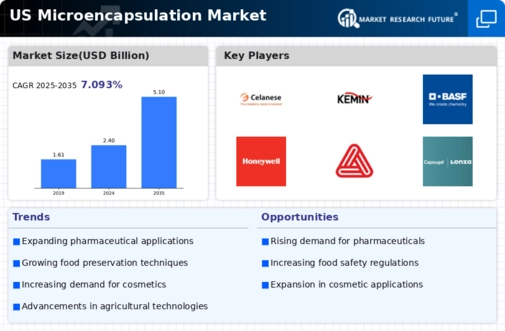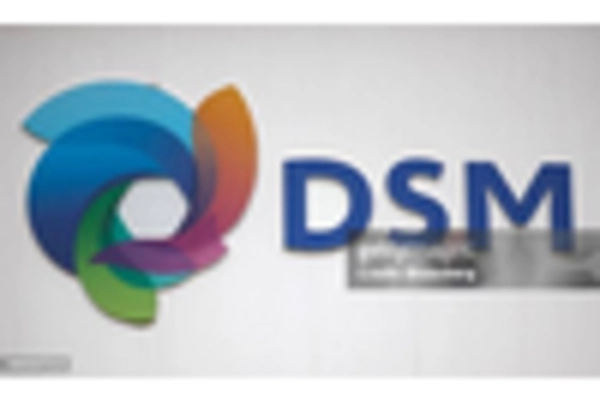Increased Investment in R&D
Investment in research and development (R&D) is a critical driver for the micro encapsulation market, as companies strive to innovate and enhance their product offerings. The focus on developing new encapsulation materials and techniques is paramount, particularly in sectors such as food, pharmaceuticals, and cosmetics. According to industry reports, R&D expenditures in the micro encapsulation market are projected to rise by approximately 15% annually through 2025. This influx of funding is likely to lead to breakthroughs in encapsulation technologies, thereby expanding the range of applications and improving the overall performance of encapsulated products. As a result, the micro encapsulation market is poised for substantial growth.
Rising Demand for Functional Foods
The micro encapsulation market is experiencing a notable surge in demand for functional foods, driven by increasing consumer awareness regarding health and wellness. As individuals seek products that offer enhanced nutritional benefits, manufacturers are turning to micro encapsulation techniques to protect sensitive ingredients such as vitamins, probiotics, and omega-3 fatty acids. This trend is reflected in the market data, which indicates that the functional food sector is projected to grow at a CAGR of approximately 8% through 2027. The ability of micro encapsulation to improve the stability and bioavailability of these nutrients positions it as a crucial technology in the micro encapsulation market, catering to the evolving preferences of health-conscious consumers.
Consumer Preference for Convenience
The micro encapsulation market is benefiting from a shift in consumer preferences towards convenience and ready-to-use products. As lifestyles become increasingly fast-paced, there is a growing demand for products that offer ease of use without compromising quality. Micro encapsulation plays a pivotal role in this trend by enabling the formulation of convenient products such as instant beverages, meal replacements, and dietary supplements. Market analysis indicates that the convenience food sector is expected to grow at a CAGR of around 6% through 2026, further driving the adoption of micro encapsulation technologies. This alignment with consumer needs positions the micro encapsulation market favorably for future expansion.
Emerging Applications in Agriculture
The micro encapsulation market is witnessing emerging applications in the agricultural sector, particularly in the formulation of fertilizers and pesticides. By encapsulating active ingredients, manufacturers can enhance the efficiency and effectiveness of agricultural products, leading to improved crop yields and reduced environmental impact. The market for micro encapsulated agricultural products is projected to grow significantly, with estimates suggesting a CAGR of 10% through 2028. This growth is attributed to the increasing need for sustainable farming practices and the demand for precision agriculture solutions. As the agricultural industry continues to evolve, the micro encapsulation market is likely to play a crucial role in addressing these challenges.
Growth in Pharmaceutical Applications
The micro encapsulation market is significantly influenced by the expanding applications within the pharmaceutical industry. As drug delivery systems evolve, micro encapsulation techniques are increasingly utilized to enhance the efficacy and safety of medications. This method allows for controlled release, targeted delivery, and improved patient compliance. Recent data suggests that the pharmaceutical segment is expected to account for over 30% of the overall micro encapsulation market by 2026. The ability to encapsulate active pharmaceutical ingredients (APIs) effectively not only improves therapeutic outcomes but also reduces side effects, making micro encapsulation a vital component in the development of innovative drug formulations.

















Leave a Comment